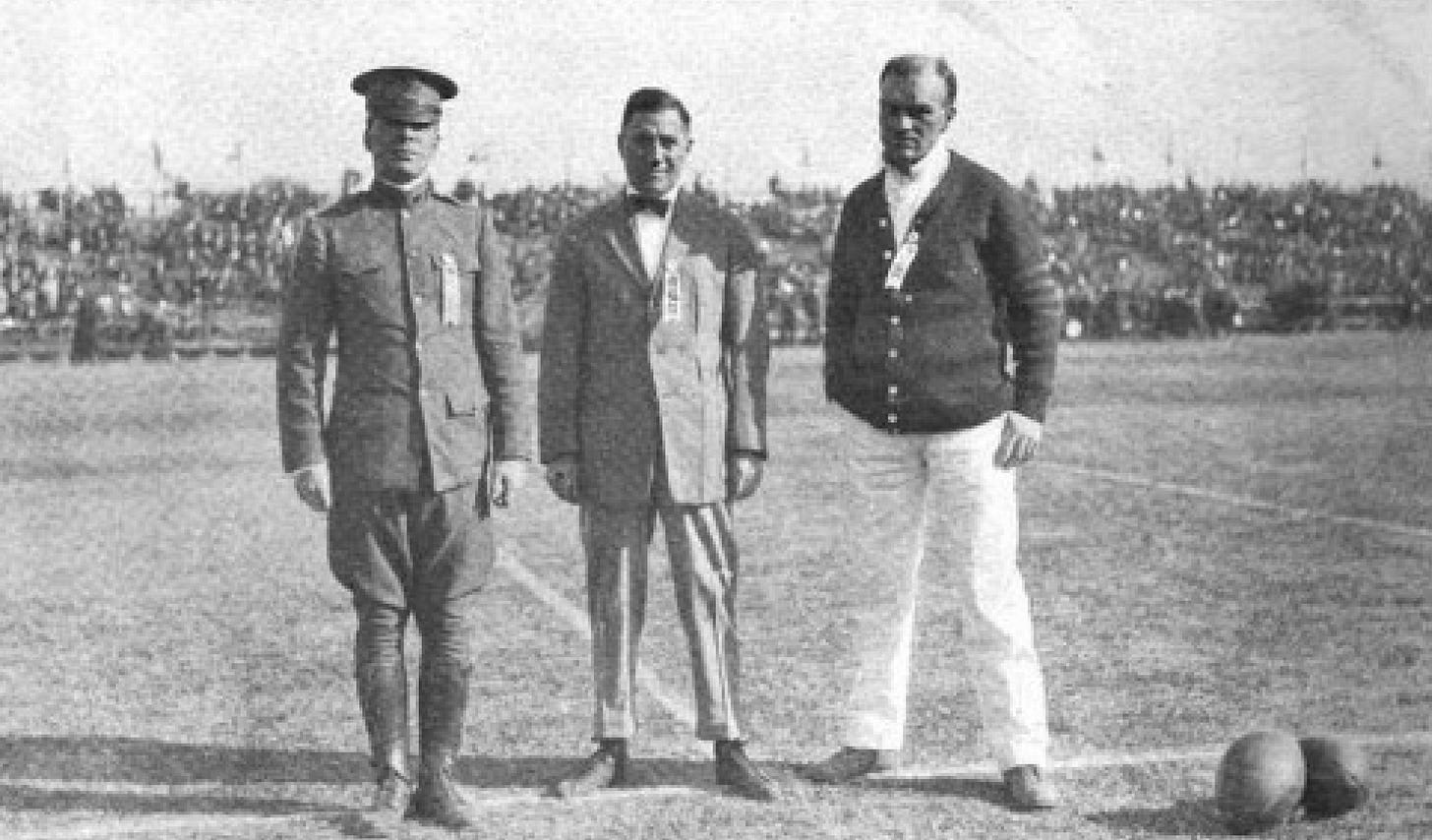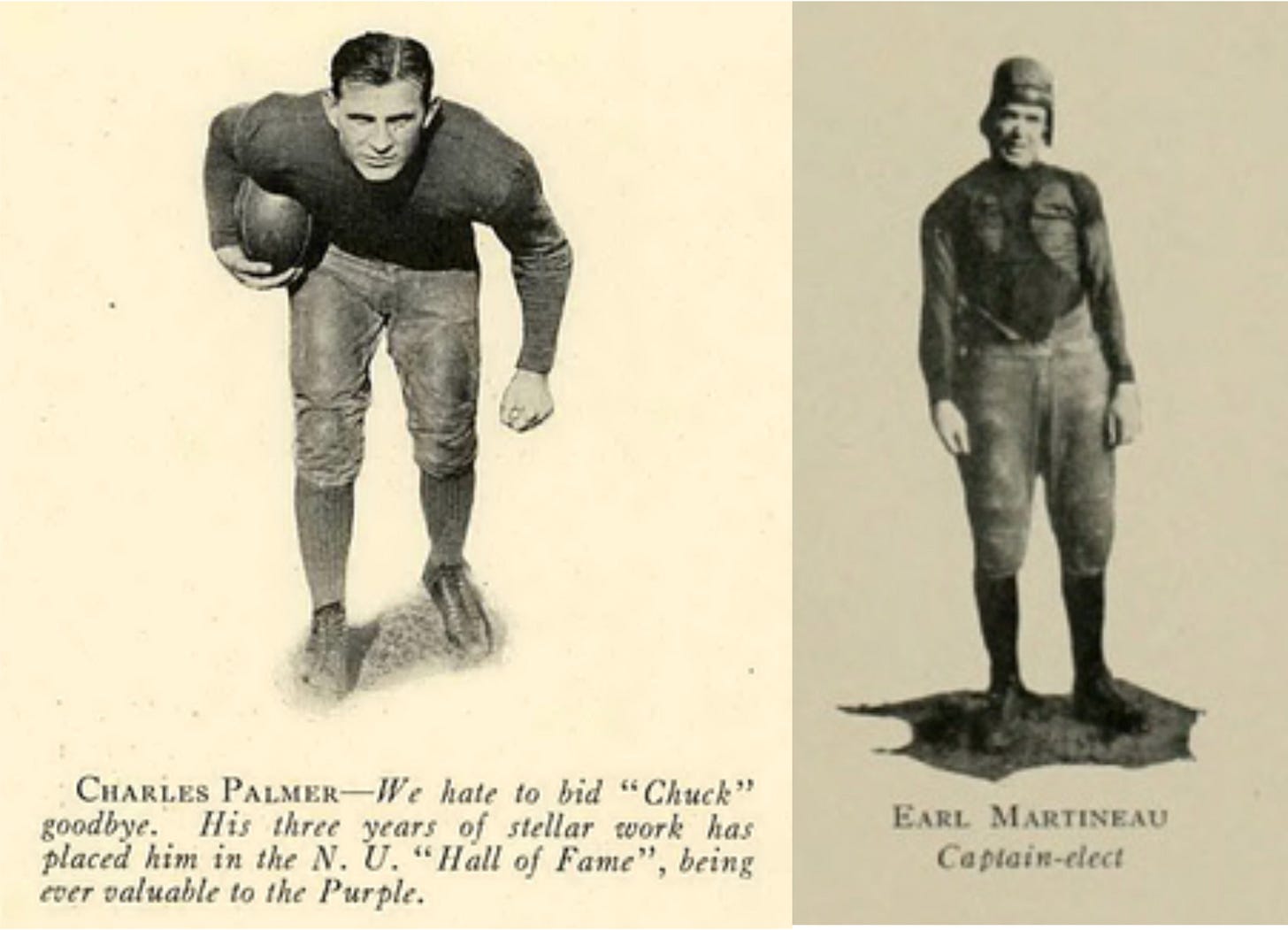Today's Tidbit... Most Spectacular Play I Saw per Walter Eckersall
A syndicated series from 1926 covered 24 football notables describing the most spectacular play they ever saw. Here's the play Walter Eckersall described.
Walter Eckersall died in 1930 at age 46, but he had already seen an entire lifetime of football when he described the most spectacular play he witnessed. Eckersall was an All-American quarterback at Chicago in 1906, who then combined sportswriting for the Chicago Tribune with refereeing football games. He was known to write columns about and predict the outcomes of games he refereed. After those games, he typed out his story and telegraphed it to the Tribune for inclusion in the next day's issue.
Despite the many conflicts of interest, everyone wanted Eckie to referee their games because he was considered honest and among the best in the business at controlling and calling a good game.

Anyway, Eckersall was there when Minnesota invaded Chicago in October 1922. Minnesota was 2-0, having beaten North Dakota and Indiana, while Northwestern bettered Beloit and lost to Chicago.
Minnesota held the advantage during the first half, primarily based on the running of Earl Martineau. The Gophers scored in the first quarter on a pass from Earl Martineau to end Conrad Eklund.
Eckersall knew Eklund because Eklund played for Great Lakes in 1918. Eckersall covered the Great Lakes team during the season, rode the train with them to Pasadena, refereed the Rose Bowl, and wrote about it for the Chicago Tribune and Great Lakes Recruit magazine, per image above showing him at the game. Regardless of their relationship, Eklund converted the kick after catching the touchdown pass, so the Gophers held a 7-0 lead until halftime.
The Gophers had another long drive in the third quarter, taking the ball to the 2-yard line when they handed it to their left half, McCreery, who fumbled, and the ball went into the end zone, sitting motionless one yard behind the line.

According to Eckersall, the ball sat on the ground for five seconds before Charles Palmer, Northwestern's top back, picked it up and scooted toward the opposite end zone with Minnesota's Earl Martineau in hot pursuit.
The two crossed one five-yard stripe after another as Martineau slowly closed the gap on Palmer until they reached Minnesota's 20-yard line, where Martineau lunged for Palmer without leaving his feet. Palmer stiff-armed him, and Martineau fell to the ground while Palmer continued on to cross the goal line and score. A Purple conversion tied the score at 7-7, where it remained for the rest of the game.
In his story about the play the next day and in his description of the most spectacular play he witnessed, Eckersall speculated that Martineau did not dive for Palmer's feet because "flying tackles" were illegal at the time. (Tacklers could not dive or otherwise leave their feet when tackling a runner.) While making a deliberate foul despite the penalty might have been an option, people still considered the taking of intentional penalties to be unsportsmanlike.
In the end, among all the great plays Walter Eckersall had seen up to 1926, the 100-yard race between Palmer and Martineau was Eckie's most spectacular.
The byline in the clipping below shows that Walter Eckersall was at the 1922 Minnesota-Northwestern game, and his story was published the next day.

In fact, if you look closely at the information immediately below the starting lineups, you will see the referee for the game was none other than W. H. Eckersall (Chicago). As a referee and writer, Old Eckie was closer to the action than most scribes for this play and many others during his career.
Football Archaeology is reader-supported. Click here to buy one of my books or otherwise support the site.



